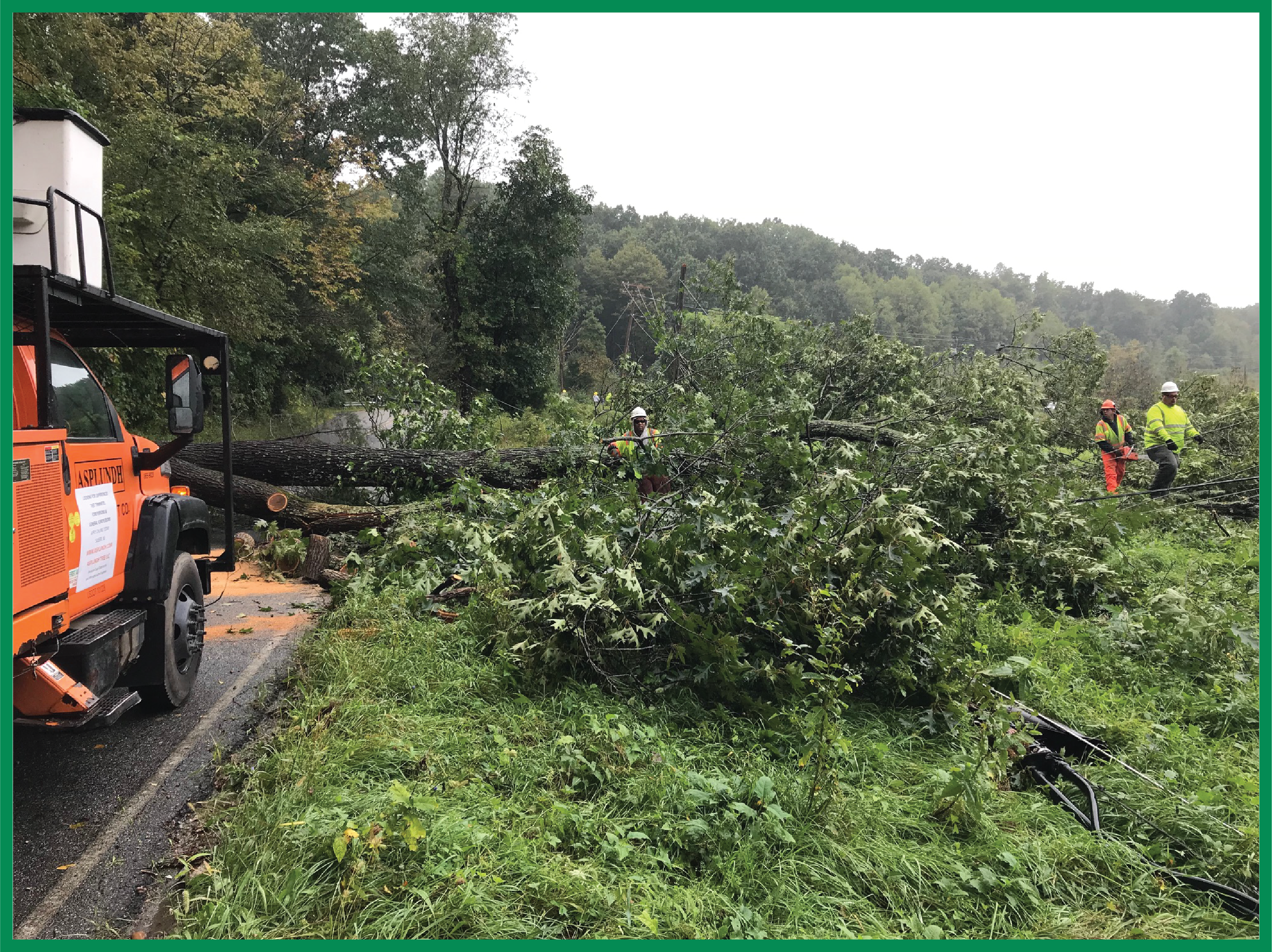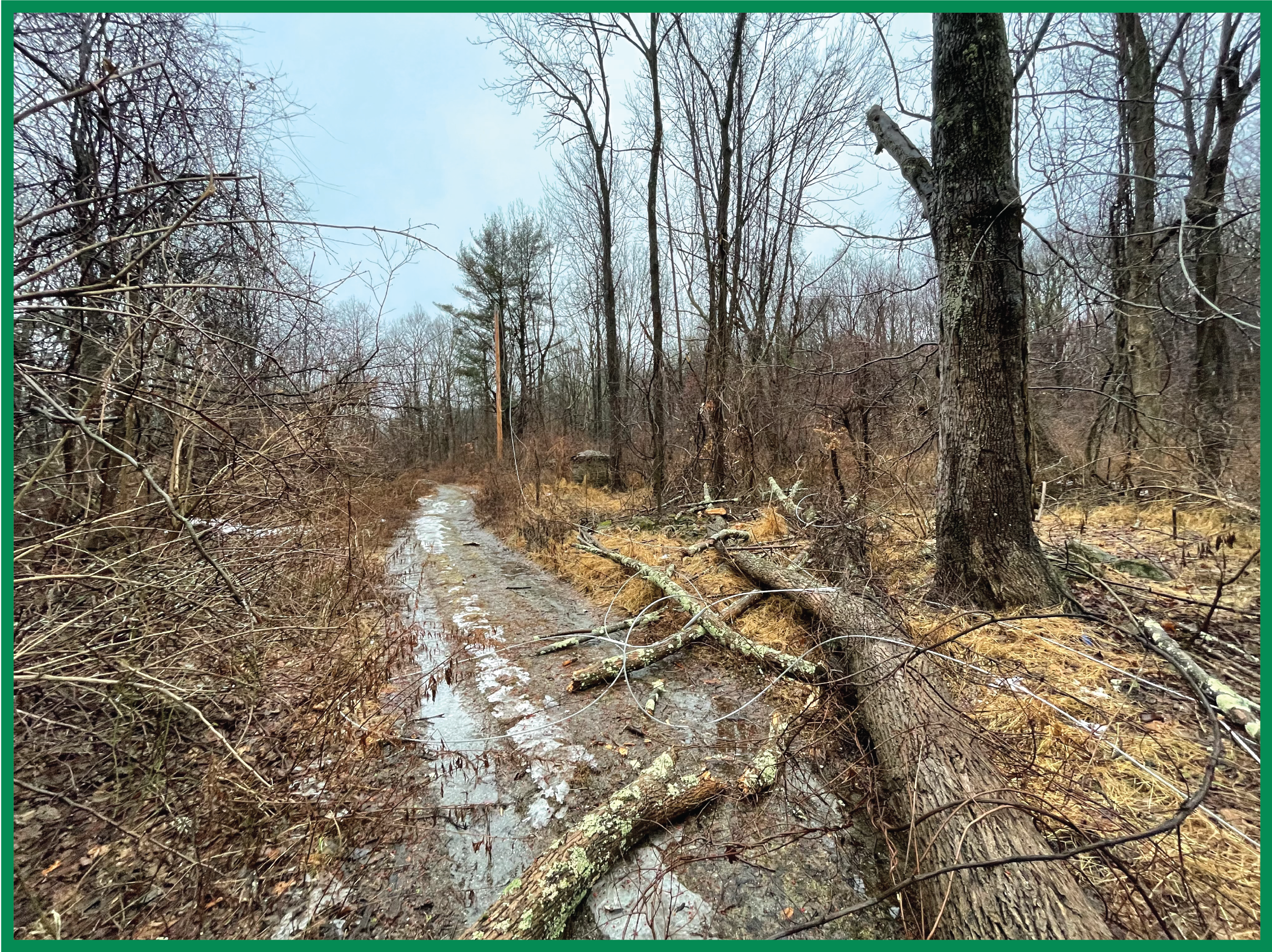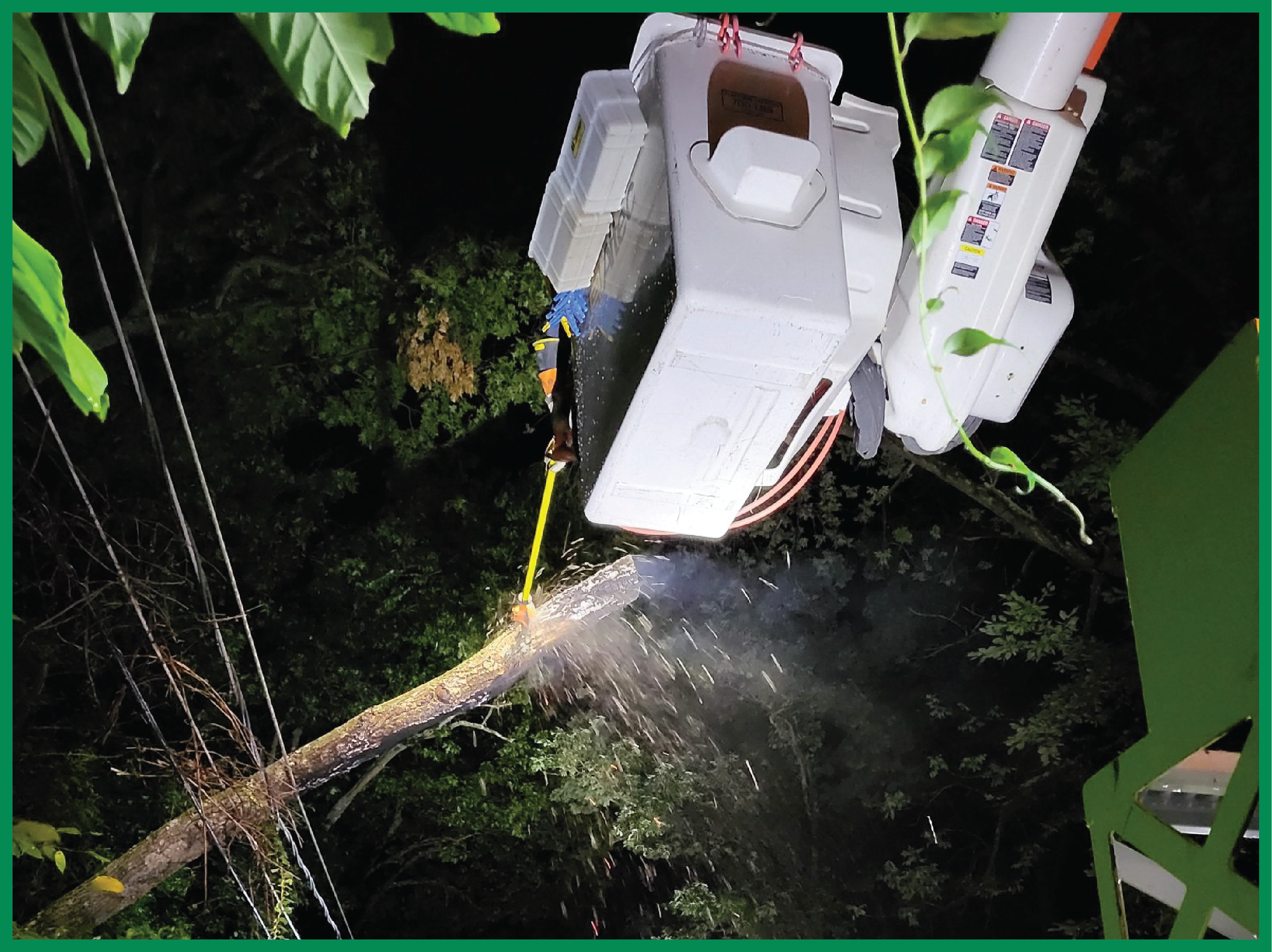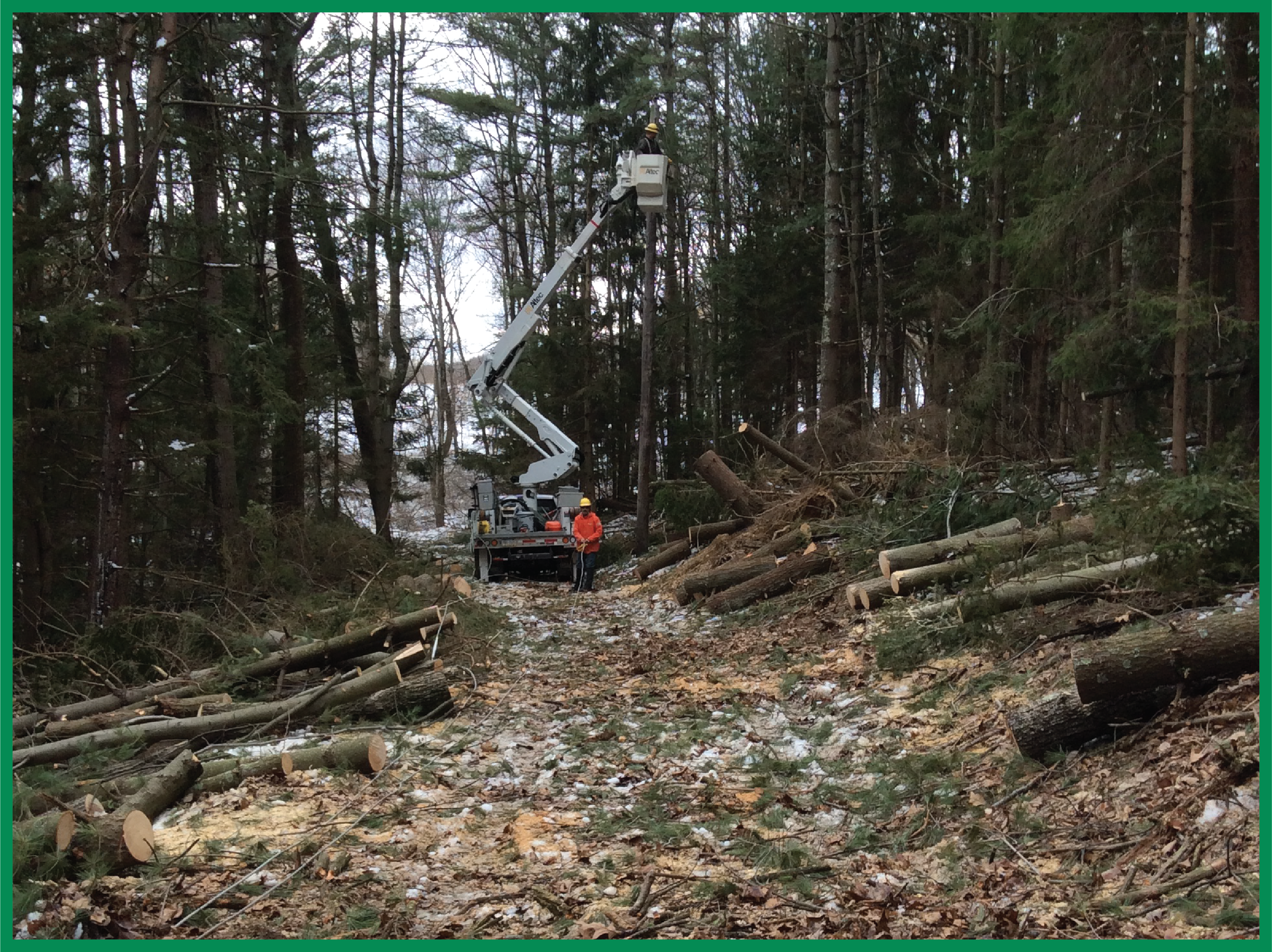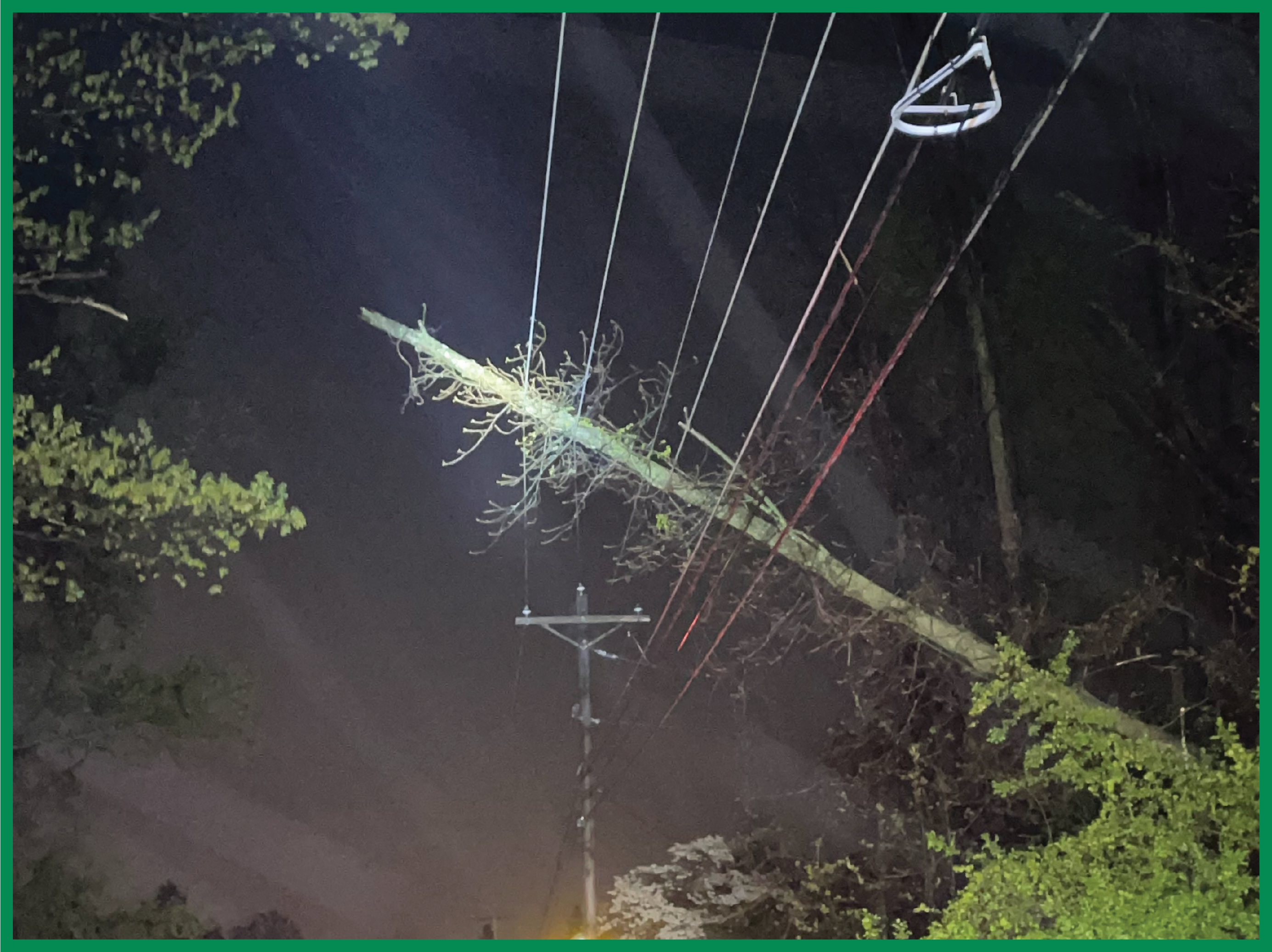Trees, branches, and other vegetation are the #1 cause of blinks and outages on Sussex REC's system. To help ensure that Sussex Rural Electric Cooperative can provide its members with the highest quality of service at the lowest possible cost, we maintain an aggressive vegetation management program aimed at keeping our lines clear and power flowing.
 Trees, vegetation, and branches contribute to as much as 70% of power interruptions on Sussex Rural Electric Cooperative's lines in a given year.
Trees, vegetation, and branches contribute to as much as 70% of power interruptions on Sussex Rural Electric Cooperative's lines in a given year.
Trees can contribute to outages for several reasons. Loose branches that fall from tall trees can fall onto power lines. In most cases, this may cause a momentary blink that is resolved when the branch falls clear of the power lines. In other cases, this can result in an outage if a branch becomes stuck on power lines or if a large branch causes damage to or breaks the lines.
While they contribute to the natural beauty of our heavily-wooded area, many local trees are reaching advanced age which can leave them weaker to disease, pests, and environmental factors. This can especially be dangerous for taller trees, which have the potential to fully knock down power lines or break poles if they fall, even when they're located on the opposite side of the street. When Sussex REC crews identify a tree that looks to be dead or dying and can pose a risk to our power lines, it is marked to be trimmed or removed
Weather plays an important factor in how trees contribute to outages. High winds can weaken branches or trees and cause them to fall. Even when the weather is clear, a tree can end up falling onto power lines due to damage it sustained during a recent storm. Winter weather can also cause snow or ice to weigh down branches and make contact with power lines.
Invasive pests have been an issue in recent years as well. The spotted lanternfly and emerald ash borer have spread throughout our area, killing many trees and leaving others in a weakened state. You can learn more about the impact that these bugs are having in our area and how you can identify their presence by visiting our Invasive Pests page.
In addition to causing blinks and outages, crowding of power lines by branches can create a fire hazard.

Our vegetation management team regularly patrols our lines to ensure our right-of-way is maintained by making note of foliage, vines, and "hazard" trees growing in proximity of power lines that could cause damage to Sussex REC equipment if they were to fall. We also review reports and photos submitted by members to inform us about trees or branches that could potentially threaten power reliability.
Sussex REC employs a certified arborist and forester whose expertise helps us determine a tree's health and the likelihood that a tree or its branches may affect the flow of power. We contract professional vegetation management companies to assist with clearing trees and vegetation away from our pole-top power lines. We aim to proactively avoid any future problems by thinking ahead, considering how branches may grow over the years, and understanding how seasonal change and weather will affect residential trees. In most cases, pruning branches and limbs is enough to correct the situation. Sometimes, it is necessary to remove an entire tree.
Using industry best practices, Sussex REC's vegetation management team will determine which vegetation needs pruning or removal to keep our electric lines free of interference. Our employees make use of cutting-edge technology to aid in identifying areas of our service territory that require tree trimming service. Using a group of specialized, SREC-developed apps, employees can easily view a map of our service territory, see miles of line that are in need of trimming work and those that have already been managed by tree trimming crews, and report new findings for areas where trees do not meet regulations. Each situation is assessed independently to determine the best approach to prevent vegetation from interfering with electrical facilities. Based on this assessment, crews may use power saws, DEP-approved herbicides, mechanical equipment, or a combination of control methods. Compatible vegetation that does not interfere with electric facilities is not disturbed.
Please note that, while we accept and investigate member reports, it is a homeowner's responsibility to trim for clearance around the service drop, which is the wire running from a poletop transformer to your home's weatherhead. Sussex REC will only trim this area if limbs are touching and deflecting the service drop. Because these are energized lines, we highly recommend using a licensed and insured tree trimming service to perform the work.

Wood Debri
If debris and/or wood is left over as a result of maintenance (trimming a healthy tree away from lines, trimming or remove trees to access equipment, etc.), wood is cut into manageable pieces and left in a pile on the nearest property. After a tree is pruned or removed, small tree limbs and branches are run through a chipper and hauled away. Wood that is too large for the chipper is cut into manageable lengths and left on the property, near the base of the tree. Disposal or use of all such wood is the property owner's responsibility.
As a result of a storm/emergency/natural cause - Trees or limbs that fall due to natural causes (weather, dead/dying, disease, etc.) are the customer's responsibility for removal. Wood/debris will be left at the site without additional cutting or stacking.
Below is our map for our regular tree trimming cycle in 2025 and the coming years:
(click the image to zoom in if needed)
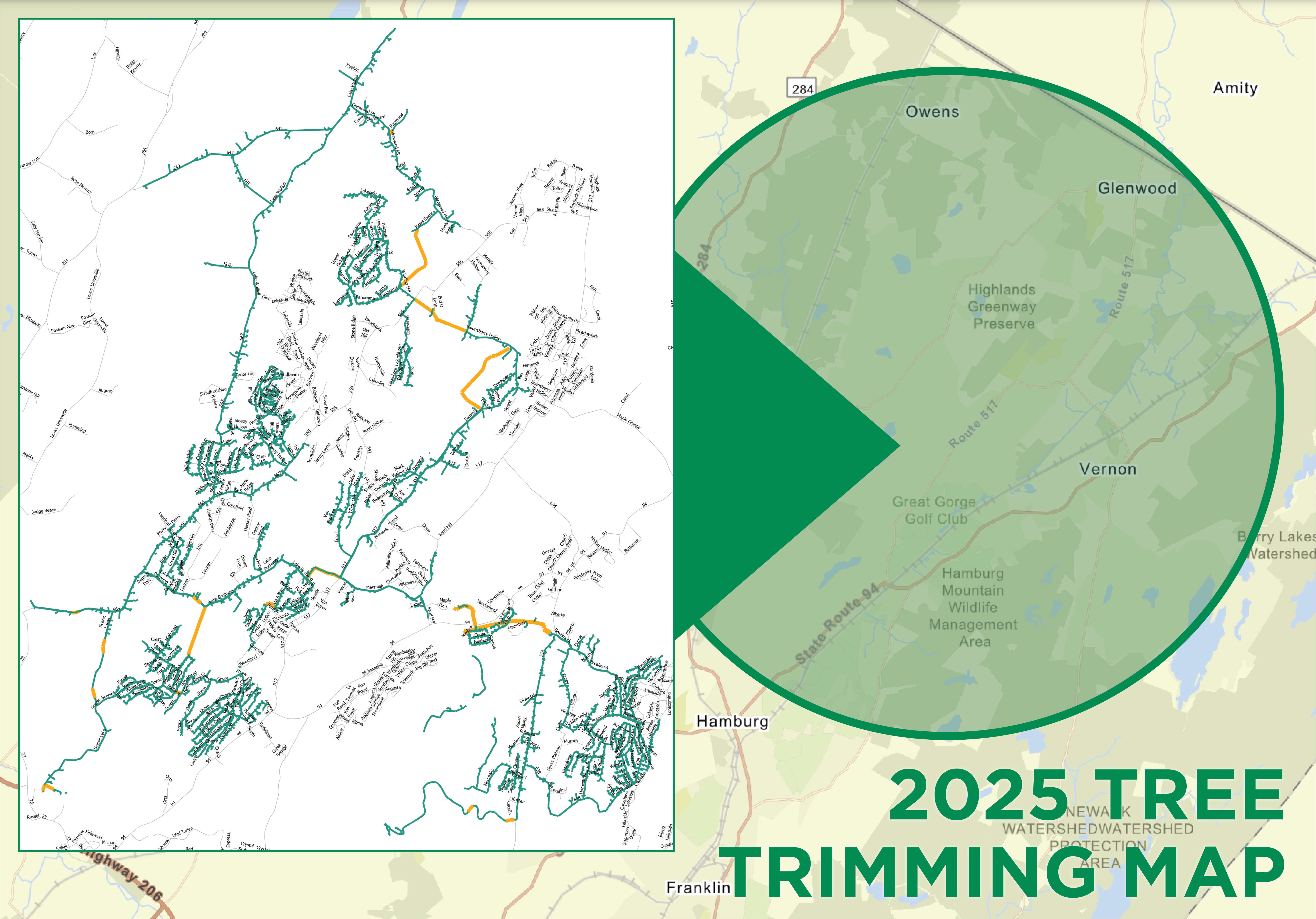

Our distribution lines and poles are often located within a public right-of-way along a road or highway. We abide by National Electric Safety Code (NESC), which requires 10 feet or more of line clearance.
The ultimate purpose of pruning and removing trees near our power lines is to minimize electrical hazards and reduce power interruptions. To ensure reliable electrical service to our members, we have either acquired or been granted a legal right to access lands owned by other parties in order to change or maintain our facilities. The right to access these lands for such purposes is called an easement.
Easements, which are legal contracts, are generally passed along with deeds of property ownership. Towns and counties also have easements wherein they can trim trees for safety purposes.
If a tree located on a property along public rights-of-way grows into our lines, we are legally permitted to prune or remove the tree causing the obstruction. This is true regardless of whether we possess and easement across the property. While it may not always be convenient to have trees on your property trimmed by our contractors, please be understanding of the fact that Sussex Rural Electric Cooperative has a responsibility to ensure safe and reliable electricity to our members by keeping our power lines free from interference. One tree can end up affecting the power quality for hundreds of your neighbors by causing power blinks or outages.
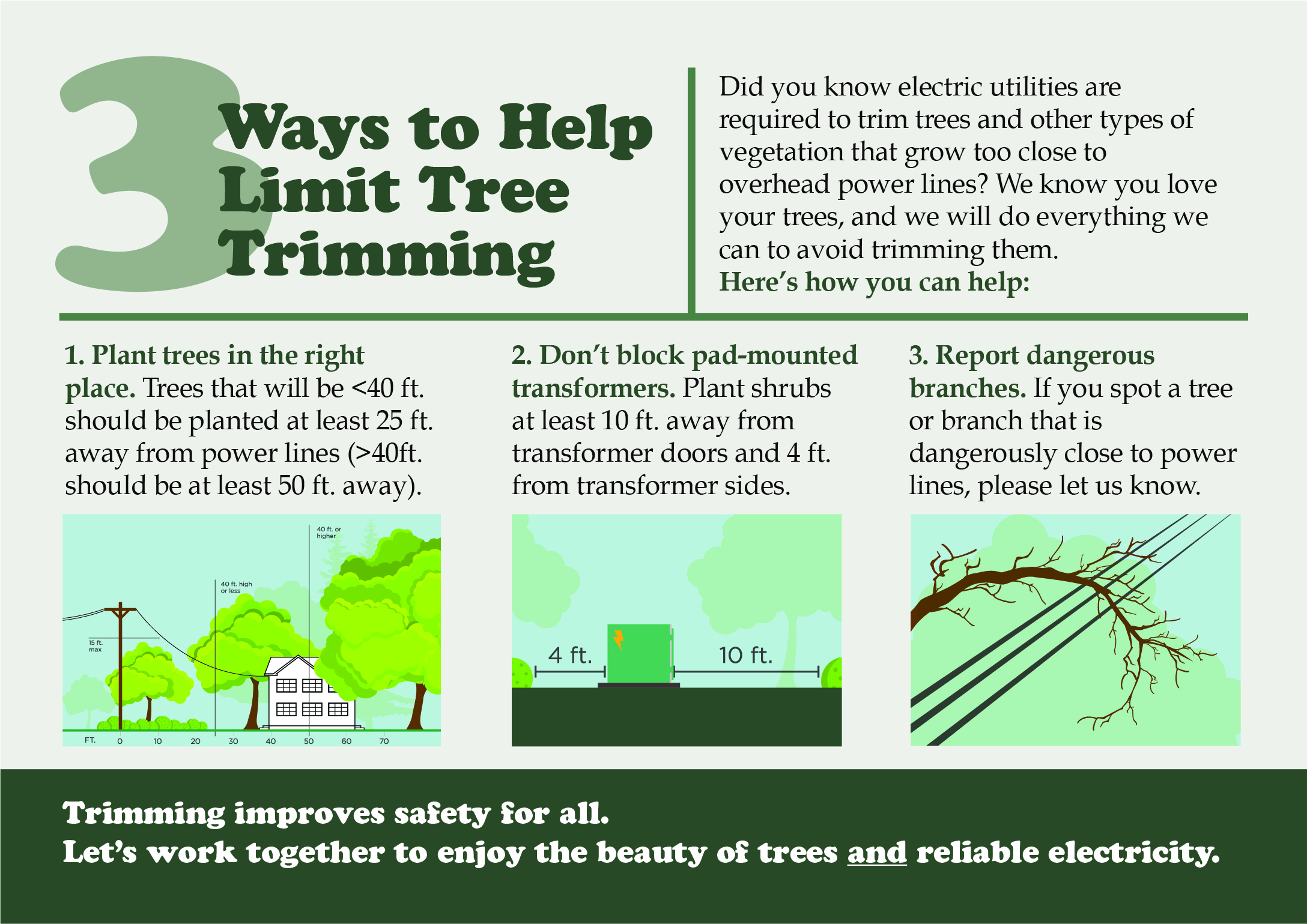
Tree Planting Guidelines
If you plan on planting a tree on your property, remember to consider how tall your tree might grow and how wide its branches may spread. This will depend on the type of tree that you are planting. Avoid planting any tree within 25 feet of overhead power lines. The graphic below demonstrates a good rule of thumb for tree planting around overhead power lines. Following this guideline will save you trouble in the future by avoiding potential power interruptions or fire hazards.
If your home is supplied power through a pad-mounted transformer, please keep it clear of any shrubs. At least 10 feet from the transformer doors and 4 feet from its sides should remain clear.
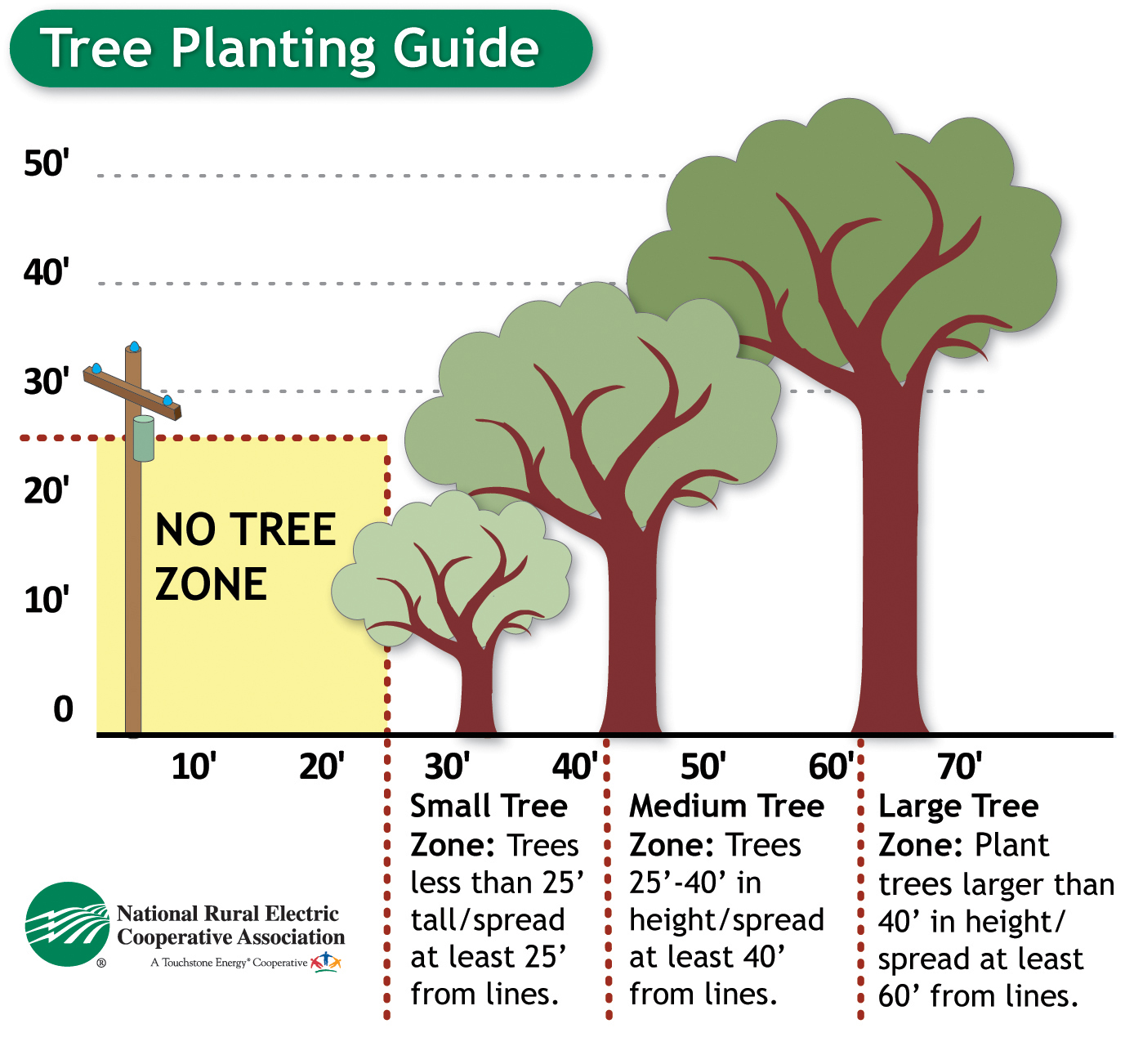
Reporting Trees or Branches
If you spot a branch dangling over power lines, a dead or dying tree leaning towards power lines, or any other piece of vegetation that looks like it may make contact with Sussex REC power lines, please let us know by reporting it by email to trees@sussexrec.com. Along with your report, please provide us with an approximate location and any photos you may have that show the tree or branch's proximity to our power lines. Photos are extremely beneficial as they allow our vegetation management team to make a determination on how much of hazard the tree or branch may pose to the flow of power.

